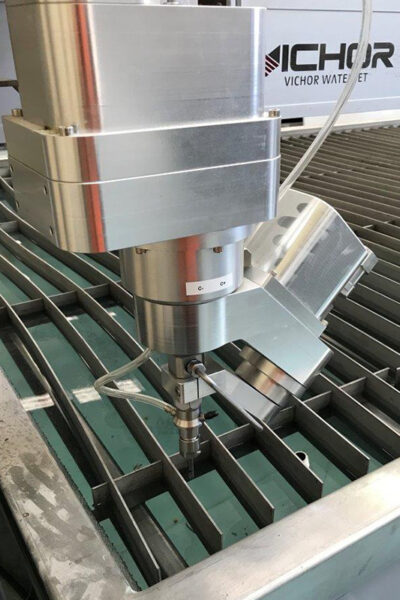
The Ultimate Guide to At Home Water Jet Cutter: Possibility, Options, and Pitfalls
The idea of owning an at home water jet cutter captivates hobbyists, artists, and DIY engineers alike. Imagine cutting intricate designs from metal, stone, glass, or tile right in your garage or workshop, with the precision of a industrial machine. The concept brings the power of advanced manufacturing to the personal level, unlocking endless creative and practical projects. But is it a realistic prospect? This comprehensive guide delves into the world of at home water jet cutter systems, exploring what it truly takes to own and operate one. We will demystify the technology, examine the practicalities of home use, review the types of systems available, showcase exciting applications, and crucially, address the common problems and questions prospective owners face. Whether you’re a serious maker or simply curious about this powerful technology, this article will provide a clear-eyed view of bringing a waterjet cutter into your home.
What is an At Home Water Jet Cutter and How Does It Work?
An at home water jet cutter operates on the same fundamental principle as its industrial counterpart, just on a smaller, more manageable scale. It is a tool that uses a highly pressurized stream of water, often mixed with an abrasive garnet, to cut through materials. The key difference lies in the size, pressure, cost, and supporting equipment required to make it feasible for a home environment.
The process begins with a water pump. In a home system, this is typically an electric pump that pressurizes water to levels significantly lower than industrial machines—anywhere from 30,000 to 60,000 PSI compared to 90,000+ PSI. This high-pressure water is then fed through a reinforced hose to a cutting head. The head contains a jewel orifice (often made of ruby or sapphire for durability) that focuses the water into a thin, coherent stream. For cutting harder materials like metals or stone, a grit feed system introduces a precise amount of abrasive garnet into the stream within a mixing chamber. This abrasive-enhanced jet is what allows a desktop at home water jet cutter to slice through tough materials. The cutting head is mounted on a motion system, usually a compact CNC (Computer Numerical Control) gantry, which moves it precisely along the X and Y axes based on a digital design file, allowing for incredibly accurate cuts.
Understanding this mechanism is crucial because each component—the pump, the abrasive delivery, the nozzle, and the CNC table—presents its own set of challenges and considerations for a home workshop setup.
The Reality of Owning an At Home Water Jet Cutter: Feasibility and Considerations
The dream is compelling, but the reality requires careful consideration. Owning an at home water jet cutter is not like buying a 3D printer; it is a significant undertaking in terms of space, utilities, and maintenance.
1. Space and Environment: Unlike a benchtop printer, a waterjet system is not a self-contained unit. It consists of the cutting table, the high-pressure pump, a water tank or filtration system, and an abrasive hopper. You will need a dedicated space, such as a garage or shed, with a sturdy, level floor. The process can be messy, involving water spray and abrasive slurry, so a clean, dry home office is entirely unsuitable.
2. Power Requirements: The high-pressure pump is a powerful electrical device. While smaller “desktop” models might run on a standard 110V/15A outlet, most serious systems will require a 220V outlet, similar to a home welding machine or clothes dryer. You must ensure your home’s electrical system can support this load.
3. Water Supply and Drainage: A continuous water supply and a plan for wastewater are absolute necessities. Most systems are closed-loop, meaning they recirculate water from a built-in or separate tank. However, this water becomes contaminated with abrasive particles and minute material dust, creating a slurry. You cannot simply drain this down a household sink or into a sewer; it will clog pipes and is often considered hazardous waste. Filtering and disposing of this slurry is one of the biggest practical challenges of an at home water jet cutter.
4. Noise Level: The process is loud. The pump generates significant noise, and the sound of the jet cutting through material is a high-decibel screech. Hearing protection is mandatory, and noise complaints from neighbors are a real possibility if not properly managed with sound-dampening enclosures.
5. Cost: This is the most significant barrier. While prices are falling, a true, abrasive-capable at home water jet cutter system is a major investment. Costs can range from tens of thousands to over a hundred thousand dollars, placing it far beyond the budget of a casual hobbyist.
Types of Systems: From DIY Kits to Benchtop Units
The market for personal waterjet cutters is evolving rapidly. Today, a prospective buyer has a few potential paths, each with its own trade-offs between cost, capability, and effort.
1. DIY Waterjet Kits and Plans: For the ultimate tinkerer, resources exist online to build your own waterjet cutter. These projects involve sourcing your own components: a high-pressure pump (sometimes modified from other applications), building a CNC gantry from scratch or repurposing one from a router, and assembling the cutting head and abrasive feed system. This route requires advanced mechanical, electrical, and programming skills but can be the most cost-effective way to achieve a functional at home water jet cutter. The downside is the immense time investment and the potential for creating an unsafe device if not engineered correctly.
2. Compact / Benchtop Commercial Systems: This is the most promising category for most serious makers. Several companies now manufacture small-footprint waterjet cutters designed for prototyping, education, and small businesses. These are fully engineered, integrated systems that come with CNC software, safety enclosures, and slurry management solutions. They are true “plug-and-play” machines, albeit with the caveats of requiring proper utilities and setup. They represent a significant financial investment but offer reliability, safety, and manufacturer support that a DIY kit cannot.
3. Pure Water Jets: It’s important to distinguish between abrasive waterjets and pure waterjets. Pure waterjets use only a stream of water without abrasive. They are excellent for cutting soft materials like foam, rubber, cardboard, and food products. These systems are simpler, cheaper, and generate less mess, making them a more plausible at home water jet cutter for specific applications. However, they cannot cut metals, stone, or glass.
Amazing Projects You Can Create with an At Home Water Jet Cutter
If you can overcome the hurdles, the creative freedom an at home water jet cutter provides is extraordinary. The ability to precision-cut such a wide range of materials opens up a world of projects:
Custom Art and Decor: Create intricate metal wall art, detailed inlays for furniture from wood and acrylic, personalized stone coasters, or complex stencils for other projects.
Personalized Gifts and Jewelry: Cut pendants, keychains, and rings from stainless steel, brass, or titanium. Engrave detailed patterns on glass or marble plaques.
Model Making and Prototyping: Engineers and product designers can rapidly prototype parts from various materials without the constraints of 3D printing, achieving much higher strength and material properties.
Home Improvement and Restoration: Craft custom metal brackets, repair antique furniture with precisely replicated parts, create unique tile patterns for a backsplash, or manufacture replacement parts for vintage appliances that are no longer available.
Automotive and Bicycle Customization: Make custom dash panels, specialized brackets, chain guards, or personalized license plate frames from aluminum or steel.
The limit is essentially your imagination and your digital design skills in CAD (Computer-Aided Design) software.
Common Problems and FAQs for the At Home Water Jet Cutter Owner
Operating an at home water jet cutter comes with a steep learning curve and a unique set of challenges. Being aware of these common issues is key to successful ownership.
1. Clogging and Abrasive Feed Issues: This is the most frequent operational problem. Moisture can cause the abrasive garnet to clump and clog the feed line. Inconsistent abrasive flow leads to poor cut quality and tapered edges. Solution: Always store abrasive in a dry environment and ensure your system’s hopper is sealed against humidity.
2. Nozzle and Orifice Wear: The jewel orifice and mixing tube are consumable parts. A worn orifice will produce a poorly focused stream, while a worn mixing tube creates a flared jet, both resulting in a wider kerf and loss of precision. Solution: Track cutting hours meticulously and replace these components based on the manufacturer’s recommendations. Keep spares on hand.
3. Slow Cutting Speeds: Compared to industrial machines, home systems have lower pressure, which translates to slower cutting, especially on thicker materials. Impatience can lead to increasing the feed rate, which then causes poor edge quality and incomplete cuts. Solution: Always use the manufacturer’s recommended feed and speed settings for each material and thickness. Accept that cutting will take time.
4. Slurry Management Disaster: The messy mixture of water, abrasive, and material dust must be contained and disposed of properly. Letting it go down a drain will cause severe blockages. Solution: Use a closed-loop tank system. Allow the slurry to settle in a container, decant the water (which can be reused), and dispose of the settled abrasive sludge as solid waste according to local regulations.
5. Is it truly safe for a home environment? Safety is a paramount concern. The water stream is capable of instantly cutting skin and causing serious injury. High-pressure hoses can rupture. Electrical hazards exist from the pump. Solution: Never bypass safety interlocks on commercial machines. For DIY builds, incorporate redundant safety measures. Always wear hearing and eye protection. Treat the machine with the utmost respect.
FAQ:
Q: How much does an at home water jet cutter cost?
A: True abrasive systems start around $30,000 and can go up to $100,000+. Pure waterjet systems and DIY kits can be cheaper but are far more limited.
Q: Can I use regular sand as an abrasive?
A: Absolutely not. Irregular sand particles will cause erratic cutting, rapid nozzle wear, and pump damage. Only specially graded garnet abrasive should be used.
Q: What software do I need?
A: You will need CAD software to design your parts and CAM (Computer-Aided Manufacturing) software, often provided by the machine manufacturer, to generate the toolpaths (G-code) for the CNC system.
The prospect of an at home water jet cutter is no longer pure science fiction, but it remains a serious commitment for the dedicated and well-resourced individual. It is not a tool for the occasional hobbyist but rather for the professional maker, the small business owner, or the artist whose work demands its unique capabilities. The barriers—cost, space, utilities, and maintenance—are substantial, but for those who can overcome them, the reward is a level of creative and manufacturing freedom that is virtually unmatched by any other desktop technology. By carefully considering the realities, understanding the common pitfalls, and starting with a clear project goal in mind, you can make an informed decision on whether this ultimate fabrication tool belongs in your home workshop.
continue reading
Related Posts
- 1820 words9.2 min read
- 1821 words9.2 min read



